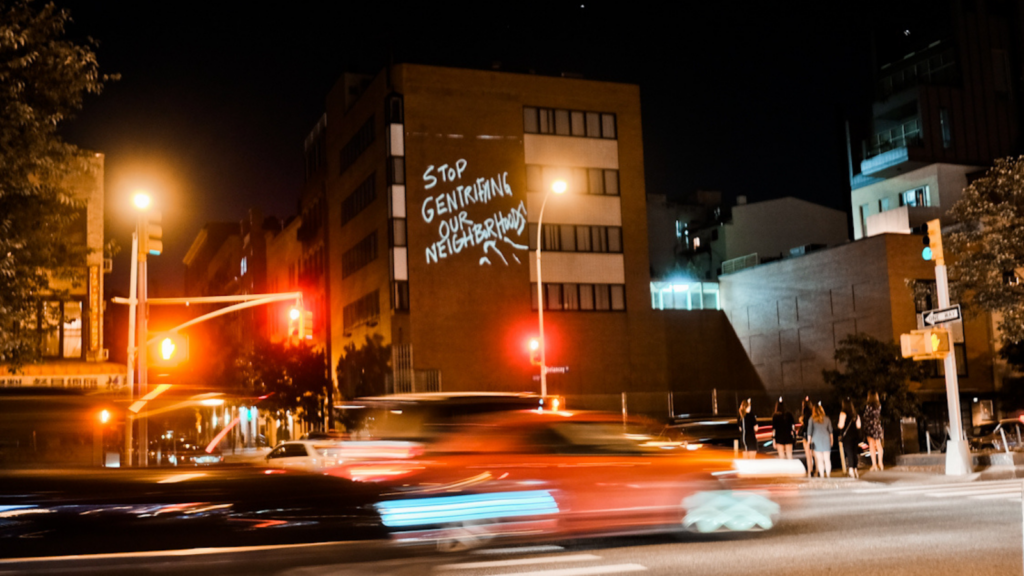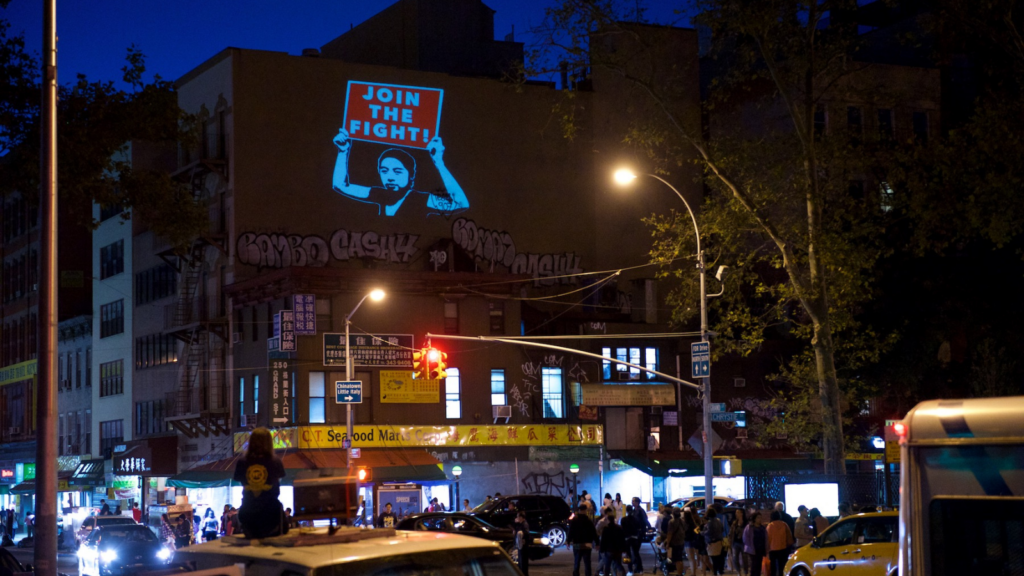Chinatown Art Brigade
The Chinatown Art Brigade (CAB) is a diverse coalition fueled by the belief in the transformative potential of cultural expressions. Composed of visual artists, media creators, writers, educators, and activists from Asian American and Asian diasporic backgrounds rooted in Manhattan’s Chinatown, CAB collaborates to harness art as a force for community-driven movements combatting gentrification and displacement.
Central to CAB’s ethos is their partnership with the Chinatown Tenants Union (CTU), a program of CAAAV Organizing Asian Communities. Founded in 2005, CTU empowers residents to unite against unjust evictions and advocate for stronger tenant protections. These grassroots endeavours not only inform CAB’s work but also served as the foundation for the Here to Stay project, initiated in 2015 by CAAAV and co-founders Tomie Arai, ManSee Kong, and Betty Yu. This initiative aimed to bolster support for the Chinatown Working Group Plan and CTU’s

City
Country
Region
Year of Creation
Featured Project

Resources
Yu, B. (2017). Chinatown Art Brigade: Resisting gentrification through the power of art, culture and stories. Visual Inquiry: Learning & Teaching Art, 6(2), 173-178.
Low, J. (2020). Dear Chinatown, DC: Exploring New Ways of Public Engagement (Doctoral dissertation).
Wong, D. (2021). Promiscuous care in movement-based research: Lessons learned from collaborations in Manhattan’s Chinatown. Gateways: International Journal of Community Research and Engagement, 14(2), 1-11.
Cole, J. L. (2022). Global Contemporary Art by Way of Chinatown: Chinese American Art in New York City, 1970-2000 (Doctoral dissertation, University of Oregon).More Information
IMPORTANT: Profile pages for all collectives are in permanent development and have been built using information in the public domain. They will be updated progressively and in dialogue with the organizations by the end of 2024. New features and sections will be included in 2025, like featured videos, and additional featured projects. Please contact us if you discover errors. For more information on mapping criteria and to submit your organization’s information to be potentially included in the database, visit this page

